How to effectively and safely descale a kettle with vinegar and baking soda?
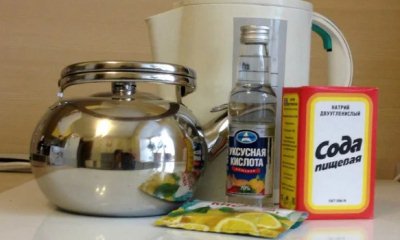 Scale in the kettle is formed when using hard water containing a lot of impurities that precipitate as a result of heating.
Scale in the kettle is formed when using hard water containing a lot of impurities that precipitate as a result of heating.
Over time, if you do not use cleaning, the scale builds up and becomes hard. It is possible and necessary to remove lime at the bottom and walls of the kettle.
One of the simplest options, like descale the kettle, - with the help of soda and vinegar.
Content
Can these products be used at home?
The sediment that appears as a result of boiling water is difficult to remove by simply washing the kettle. This is due to the fact that lime deposits are insoluble in water.
Even purchased purified water, like that passed through home filters, has a small level of mineralization, and can also precipitate during heating.
Table vinegar and baking soda are foods that can be used to treat the inside of a teapot.
Advantages and disadvantages of the method
The descaling method using available products such as soda and vinegar has many advantages, but there are also some disadvantages.
 Pros of using:
Pros of using:
- harmlessness to health;
- democratic cost;
- availability;
- completely natural product, without chemical impurities;
- good efficiency in non-running cases;
- ease of use.
Cons of the method:
- there may be poor efficiency the first time with a thick layer of scale;
- it takes time for the solution to work - the result is not immediate.
Despite some drawbacks, the use of baking soda and vinegar is a very effective method of removing scale.
Procedure
You can use table vinegar and baking soda to remove thick limescale deposits at home.
The procedure is not complicated:
- Pour ½ cup vinegar into an empty container.
- Pour 1 tbsp. l. soda.
- After the reaction is over, add water to the full volume.
- Put on the stove.
- Boil for 30 minutes.
- Let stand until cool.
- Pour out the water.
- Rinse.
Stages of work:
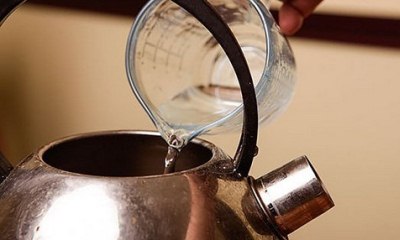 pour water into the kettle, not reaching the top by about the volume of the glass;
pour water into the kettle, not reaching the top by about the volume of the glass;- bring water to a boil;
- add 3 tbsp. l. soda;
- remove from heat;
- let stand for 30 minutes;
- boil again;
- drain the water;
- rinse the dishes;
- collect water;
- add ½ cup vinegar or 1 tbsp. l. vinegar essence;
- boil for 30 minutes;
- wash the kettle using a metal washcloth.
If there is little plaque, then even a recipe based on soda alone (without adding vinegar) will help. To implement it you will need:
- Fill more than half the kettle with water.
- Pour 3 tbsp. l. soda.
- Boil.
- Keep on fire for 30 minutes.
- Remove from heat.
- Leave on for 60 minutes.
- Wash off the sediment using a brush.
Top 3 alternative folk ways
In addition to vinegar and baking soda, other products will help to descale the surface of the kettle.
Lemon acid
This method based on the action of citric acid can be used for cleaning conventional and electric kettles.
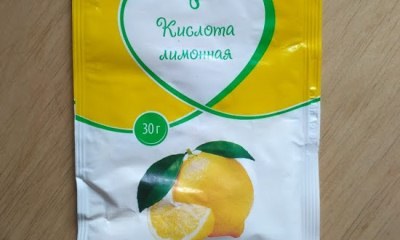 Application steps:
Application steps:
- collect water more than half the volume;
- add 2 tbsp. l. acids;
- boil;
- let stand until completely cooled;
- rinse using a sponge;
- rinse with water.
The effectiveness of this method is due to the effect of the acid on the lime deposits in the teapot. Read more about descaling kettle using citric acid. here.
About the use of citric acid for descaling in a kettle - video instruction:
Sweet soda
This method is not the most effective, but it is also capable of showing good results in cases not started. For its implementation, you will need sweet soda water, for example, lemonade, Sprite, or another similar drink.
Process steps:
- Pour soda water into a kettle for ½ or 2/3.
- Boil.
- Let stand until cooled completely.
- Rinse with a sponge.
- Rinse with clean water.
For more information on descaling a kettle with Coca-Cola, see this article.
Apple peelings
Apple cleansers will help to cope with scale in a regular kettle. This method is suitable for metal and enamel cookware. For a thick layer of old deposits, this method may be ineffective.
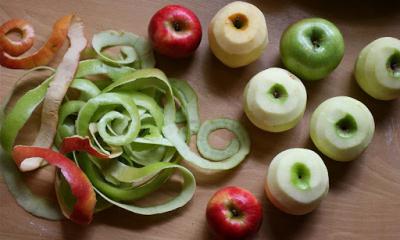 Application:
Application:
- put cleaning in an empty kettle;
- to fill with water;
- boil;
- leave to stand for a couple of hours;
- remove cleaning;
- rinse the inner surface with a washcloth.
Household chemicals if all else fails
To remove limescale from the kettle and other utensils, specially designed products will help. You can buy them in the departments of household chemicals.
Romax boom
Antiscale preparation is intended for removing limescale from conventional and electric kettles. The product is produced in liquid form in 300 ml bottles.
Application procedure:
- Pour water and product into the kettle. Proportion - based on the ratio - for every 1 liter. water - 200 ml Anti-scale.
- Stir the solution.
- Leave to stand (no heat) for 30 minutes.
- Pour out the solution.
- Rinse with a washcloth.
- Rinse.
The cost of one package is from 400 rubles. Manufacturer - Belarus. Cannot be used to clean enamel teapots.
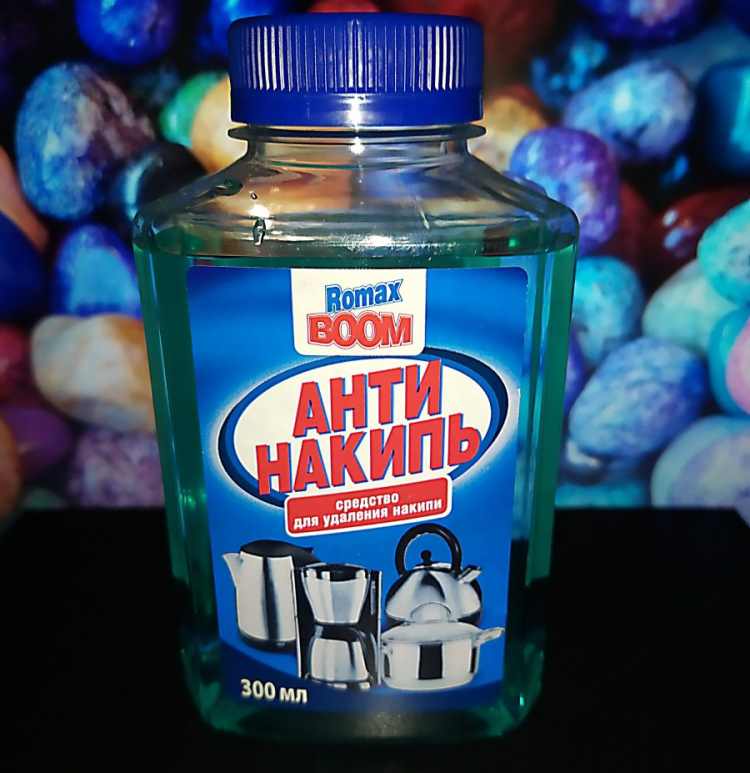
Chistin Anti-scale
This tool is inexpensive and easy to use. The powder is produced in disposable packages - sachets weighing 75 grams. It is possible to use Chistin for cleaning enamel and plastic surfaces.
Application:
- pour 1 liter of warm water into the kettle;
- pour the contents of Chistin;
- stir;
- set aside for 30 minutes;
- rinse with a sponge;
- rinse.
Price - about 40 rubles for 1 sachet. The goods are produced in the Russian Federation.
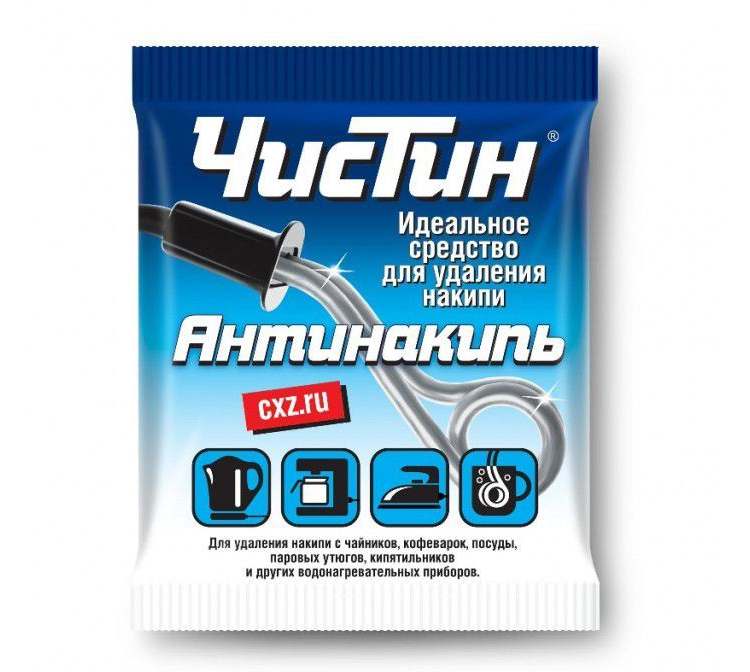
Anti-scale
Antinakipin funds are produced by several companies in the Russian Federation, the price is about 20 rubles. Such preparations are intended for descaling teapots.
Usage is very simple:
- Pour water - 2/3 of the kettle's volume.
- Pour in powder.
- Stir and leave to stand unheated for about 20 minutes.
- Drain.
- Rinse with a washcloth or brush.
- Rinse with clean water.
Do not use on enamel teapots.
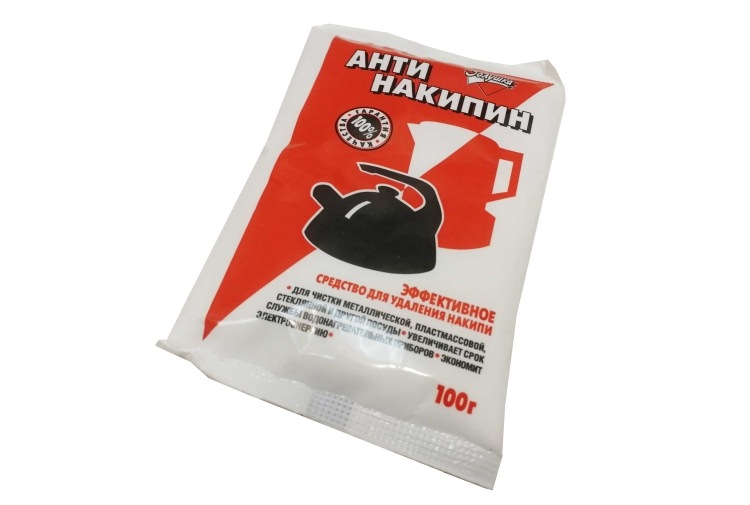
7 recommendations
Deal with the problem of limescale in the kettle the following recommendations will help:
- Overgrowing with scale, the dishes take on an untidy look, and the water from it is harmful to health. The solution to the problem is regular cleaning using home or special products.
- Trying to remove scale with sharp objects is not the best option, as you can easily damage the material of the kettle itself, and the result of such an experiment is not guaranteed.
- When using vinegar and soda to remove scale, do not mix other substances with them.
- If the used recipe for descaling seemed to be weakly effective, then when trying a new product, including a special one, the dishes must be thoroughly washed beforehand.
- There is no clear time frame for how often to descale. The work must be carried out taking into account the state of the bottom and walls from the inside, trying not to start the situation.
- The use of vinegar essence is unacceptable for cleaning plastic dishes.
- Baking soda will also help remove plaque from the teapot. For wiping, you can use a loofah and 1 tbsp. l. soda.
He will tell you about the methods and methods of descaling this section.
Conclusion
The use of citric acid and soda, as well as other descaling agents, will keep the kettle neat and clean. At the same time, its optimal thermal conductivity will be maintained, and the likelihood of fragments of lime deposits entering the body will be excluded.
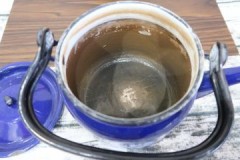
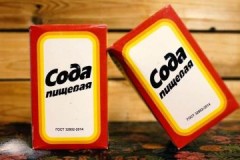
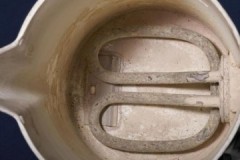
 Cleaning
Cleaning Wash
Wash Ironing
Ironing Technics
Technics Cleaning products
Cleaning products Storage and care
Storage and care